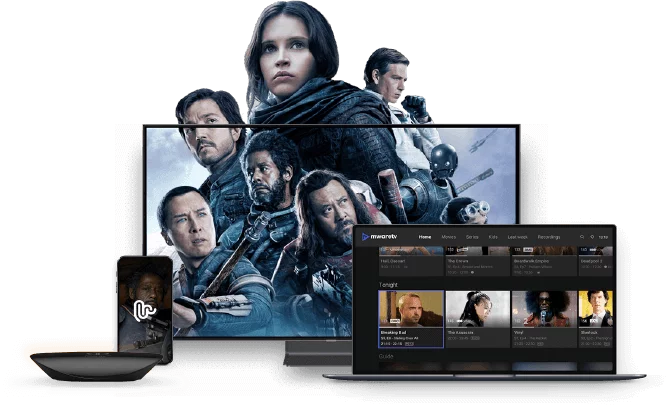Stream Anyplace, At Any Moment: IPTV Subscription Services at Your Fingertips
Stream Anyplace, At Any Moment: IPTV Subscription Services at Your Fingertips
Blog Article
How IPTV Functions: A Step-by-Step Guide to Net Procedure Tv Innovation
Net Protocol Tv (IPTV) has reinvented the way we take in tv material, using a new world of possibilities via the power of the web. Recognizing the ins and outs of exactly how IPTV functions can shed light on the innovation that drives this cutting-edge kind of media delivery. From the basic concepts of IPTV to the complex process of web content delivery, each step plays a critical role in making sure a smooth watching experience. In this guide, we will discover the hidden devices that make IPTV a fascinating fusion of innovation and amusement.
IPTV Basics
In understanding IPTV basics, it is critical to understand the fundamental workings of this technology in delivering tv web content online. IPTV, which represents Net Procedure Television, utilizes Internet Protocol (IP) networks to send tv material to users' devices. Unlike traditional approaches of relaying tv content through wire or satellite signals, IPTV streams media via high-speed web connections.

Additionally, IPTV permits interactive capacities, such as video clip as needed (VOD) and digital program overviews (EPG), enhancing the customer experience by supplying more control and flexibility in accessing web content. Generally, understanding the essentials of IPTV sets the foundation for discovering its advanced performances and the advantages it uses to modern tv consumption.
Web Content Delivery Refine
Efficient web content shipment in IPTV systems entails a well-structured process that makes certain seamless transmission of tv content over IP networks. The web content delivery procedure in IPTV starts with the development of the video clip content, which is after that encoded into electronic format appropriate for IP transmission. This inscribed material is after that securely kept on web servers known as media web servers. When a viewer requests certain content, the IPTV system gets the requested data from the media web servers and provides it to the visitor's device over the web.

Middleware Functionality
With the integration of middleware, IPTV systems gain boosted performance that improves user interaction and web content administration. Middleware acts as an essential component that links the space between the customer interface click to investigate and the back-end facilities, helping with seamless interaction and interaction within the IPTV system. Among the crucial functions of middleware in IPTV is to make it possible for individualized individual experiences by providing attributes such as interactive program guides, video-on-demand solutions, interactive marketing, and user choices management. By systematizing these performances through middleware, solution providers can use a more vibrant and tailored IPTV experience to their clients.

Tool Compatibility
Provided the essential function of middleware in allowing seamless interaction and content management in IPTV systems, an important element to consider is the compatibility of devices used for accessing the IPTV solutions. Tool compatibility is necessary for making sure a smooth individual experience and ideal performance when accessing IPTV content.
In the context of IPTV, tool compatibility describes the capability of a device to effectively connect with the IPTV solution, show content correctly, and sustain the needed procedures and codecs for streaming video web content online. Various gadgets, such as smart Televisions, set-top boxes, mobile phones, tablets, and computers, may have varying degrees of compatibility with IPTV services.
To make certain a smooth watching experience, it is essential for individuals to choose devices that work with the specific IPTV solution they are using. In addition, IPTV solution companies need to use support for a vast array of devices to provide to the diverse requirements of their user base. By focusing on device compatibility, both customers and provider can enhance the total IPTV experience.
Quality of Solution (QoS)
Considering the crucial function of keeping a high criterion of performance and reliability in IPTV systems, guaranteeing constant High quality of Solution (QoS) continues to be a basic facet of the user experience. QoS next in IPTV refers to the ability of the system to deliver content with minimal interruptions, high resolution, and quick packing times.
Service suppliers utilize QoS systems such as web traffic prioritization, buffering, and error correction go to this site to keep a steady IPTV service. By prioritizing IPTV website traffic over much less time-sensitive data, service providers can guarantee smooth playback also throughout height usage hours. Buffering aids compensate for network fluctuations, while mistake improvement methods boost data stability.
Constant tracking and optimization of QoS criteria are necessary to adapt to altering network conditions and individual demands. Ultimately, a durable QoS structure is essential for supplying a seamless and satisfying IPTV experience to customers.
Verdict
In conclusion, IPTV runs through the transmission of television material over web protocol networks. Top quality of Service plays a vital duty in maintaining the effectiveness and integrity of IPTV solutions - IPTV subscription.
Report this page